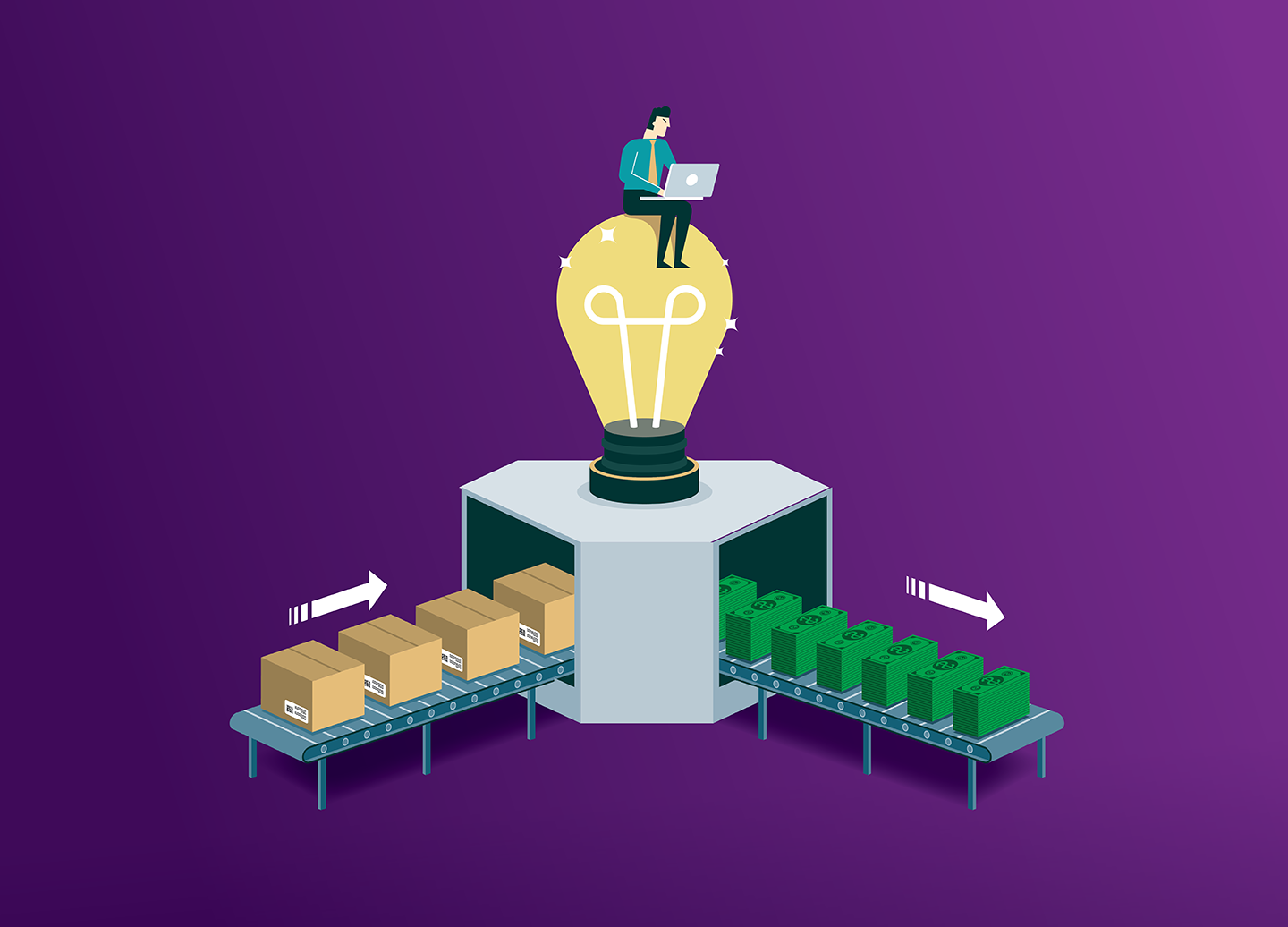When Parcel Shipping Software Starts Costing More Than It Saves

Discover how outdated shipping software can drain your resources
There’s a moment in every growing business when the tools that once felt like a perfect fit start to feel a little tight. Maybe it’s when your team begins to complain about how long it takes to print shipping labels. It could be when you realize your shipping software can’t handle the rules you need to keep hazmat shipments automatically compliant. Or is it just the creeping suspicion that you’re spending more on shipping than you should be, especially when your software charges you every time a label prints?
If you’re shipping more than a few thousand parcels a day, you’re no longer small. You’re in that transitional zone that is too large for lightweight tools, but not quite ready to call yourself enterprise. That’s exactly when low-budget shipping software starts showing its cracks.
The label printing delay that used to be a minor annoyance? Now it’s costing you hours of labor and is the bottleneck to your high-volume conveyor system.
The rate shopping that used to be good enough? Now it’s missing savings you can’t afford to ignore.
This post is for the people who’ve built something real. You’ve put in the work, scaled your operations, and now you’re starting to feel the friction. Let’s take a closer look at what happens when your shipping software starts costing you more than it saves, and what you can do to stay ahead of the curve.
When “Good Enough” Starts Slowing You Down
Most businesses start with a shipping setup that’s simple and functional. You’ve got a few carriers, a handful of rules, and a system that mostly works. But as order volume increases, what used to be manageable starts to feel like a bottleneck. If your shipping software charges per label, those delays are costing money. Transactional pricing models might seem affordable at first, but at scale, they become a recurring tax on your growth.
Label generation slows to a crawl. It may not seem like much, just a couple seconds per label. But when you’re printing thousands each day, those seconds turn into hours. In automated facilities, even a brief delay can trigger a jackpot, where stalled labels back up the entire line, forcing manual intervention and disrupting flow. Suddenly, your team is falling behind, and you’re paying overtime just to keep pace with demand. For enterprise shippers, the stakes are even higher. Choosing the right carrier engine architecture, whether API, on-prem, or hybrid, can make or break throughput. [Discover how hybrid setups can avoid bottlenecks and keep automation running smoothly.]
Rate shopping becomes a manual chore. Basic systems often lack the flexibility to apply complex business rules, so your team ends up choosing carriers based on habit or guesswork. That leads to inconsistent decisions, missed discounts, and a process that’s more reactive than strategic. [Look closer at how real-time rate shopping can unlock savings.]
Hazmat shipments, once rare, are now part of your daily routine. If your shipping platform can’t handle the compliance requirements, you’re either building risky workarounds or relying on tribal knowledge. Neither is sustainable when regulatory fines and customer safety are on the line.
Finally, we get to the mental toll. When your team spends time troubleshooting, double-checking, and fixing issues that should be automated, it pulls focus away from higher-value work. Instead of improving processes or enhancing customer experience, they’re stuck babysitting a system that’s no longer keeping up.
These examples aren’t hypothetical problems. They’re signs that your fulfillment operation has outgrown the logistics software you started with and they’re quietly draining your time, your money, and your momentum.
Signs It’s Time to Upgrade
You don’t need a consultant to tell you when your shipping software is holding you back. The signs are usually right in front of you if you’re willing to look.
- Your team is spending more time managing exceptions than moving orders. They’re manually fixing shipments that should be automated, chasing down rate discrepancies, and double-checking hazmat labels because the system doesn’t handle them correctly. That’s not optimization, it is firefighting.
- You’re paying more as you ship more. Transactional pricing models that charge per label can quietly balloon your costs. What looked like a budget-friendly solution at launch now feels like a penalty for growing.
- You’ve started hiring people just to babysit shipping. Maybe it’s a dedicated label-printing role, or someone whose job is to monitor carrier performance and manually reroute packages. These roles didn’t exist when you were smaller, and they wouldn’t be necessary if your shipping platform could keep up.
- Missed Service Level Agreements (SLAs) and cutoff times are becoming more common. You’re not missing them because your team is slow or lazy, but because your system can’t process fast enough to meet the pace of your operation. When label generation slows down, everything else does too.
- You’ve built workarounds for edge cases that used to be rare but now happen daily. Split shipments, multi-box orders, regional carrier preferences, and hazmat compliance aren’t fringe scenarios anymore. They’re part of your core business, and your logistics software should treat them that way.
If these sound familiar, you’re not alone. Dive into the most common clues that your parcel shipping software is too small for your operation.
And maybe the most telling sign is that you’re starting to ask, “Is this really the best we can do?” Asking that question doesn’t come from frustration, it comes from growth.
What Advanced Logistics Software Actually Solves
As your business scales, shipping becomes a central part of the customer experience. Every delay, misrouted package, and manual fix slows down operations, while eroding trust and profitability.
Modern logistics platforms are designed to perform under pressure. Label generation happens in milliseconds, keeping teams productive and shipments on schedule. Rate shopping is dynamic, applying business rules in real time, beyond simply cost and time in transit, to select the best carrier and service level for each order.
Hazmat compliance is automated, eliminating the need for manual checks or risky workarounds. For a visual breakdown of how ProShip and Labelmaster work together to simplify hazmat shipping, explore the Hazmat Process Model. These shipping systems also support complex scenarios like split shipments and multi-box orders. Business rules should be built in, and your shipping platform should handle them without extra effort. [Explore more on how business rules enable agility.]
Upgrading isn’t about chasing features. It’s about removing friction, reducing risk, and giving your team the tools they need to operate at scale. With enterprise-grade platforms, you’re not punished for scaling. There are no per-label fees, no hidden charges, only performance that grows with you.
Don’t Wait Until It Breaks
By the time your shipping software becomes a daily frustration, the damage is already happening. Missed cutoff times, rising labor costs, and inconsistent carrier decisions are signs that that your operation has outpaced your tools.
ProShip multi-carrier shipping software is built for businesses that are scaling fast and need their logistics software to keep pace. Our advanced multi-carrier shipping software is a platform designed to handle complexity without slowing you down.
Label generation happens in milliseconds, even at high volumes. One customer who ships over 10,000 parcels a day moved from a system that took two seconds per label to ProShip’s sub-second performance. That shift reclaimed hours of productivity every single day and helped them meet tight SLAs without adding headcount.
Rate shopping is handled dynamically, using your business rules to evaluate carriers in real time. ProShip’s Advanced Date Shopping looks at data beyond cost, factoring in carrier holidays, non-transit days, last trailer pulls, label creation time and more. One global manufacturer saw an 8% annual savings simply by letting ProShip automate what their team had been doing manually.
Hazmat compliance is integrated into the platform. No more spreadsheets or tribal knowledge needed. ProShip applies the correct rules automatically, reducing risk and keeping shipments compliant without slowing down fulfillment.
ProShip’s pricing model is built for scale. Unlike transactional systems that charge per label, ProShip offers predictable pricing that doesn’t punish growth. Whether you’re shipping 10,000 parcels or 100,000, your costs stay aligned with your business and not your label count.
When things get complicated including split shipments, multi-box orders, regional carrier preferences, ProShip doesn’t require workarounds. The ProShip platform handles those scenarios natively.
Want to see how this plays out in the real world? Check out how Ulta Beauty scaled their retail shipping with ProShip, or watch how The Packers Pro Shop elevated the fan experience through smarter parcel fulfillment.
If you’re shipping thousands of parcels a day and starting to feel the strain, don’t wait for something to break. The cost of staying stuck is higher than you think.
Ready to see what ProShip can do for your business? Schedule a discovery call or reach out to our team to talk through your shipping challenges. We’ve helped hundreds of companies make the leap and now it’s your turn.

